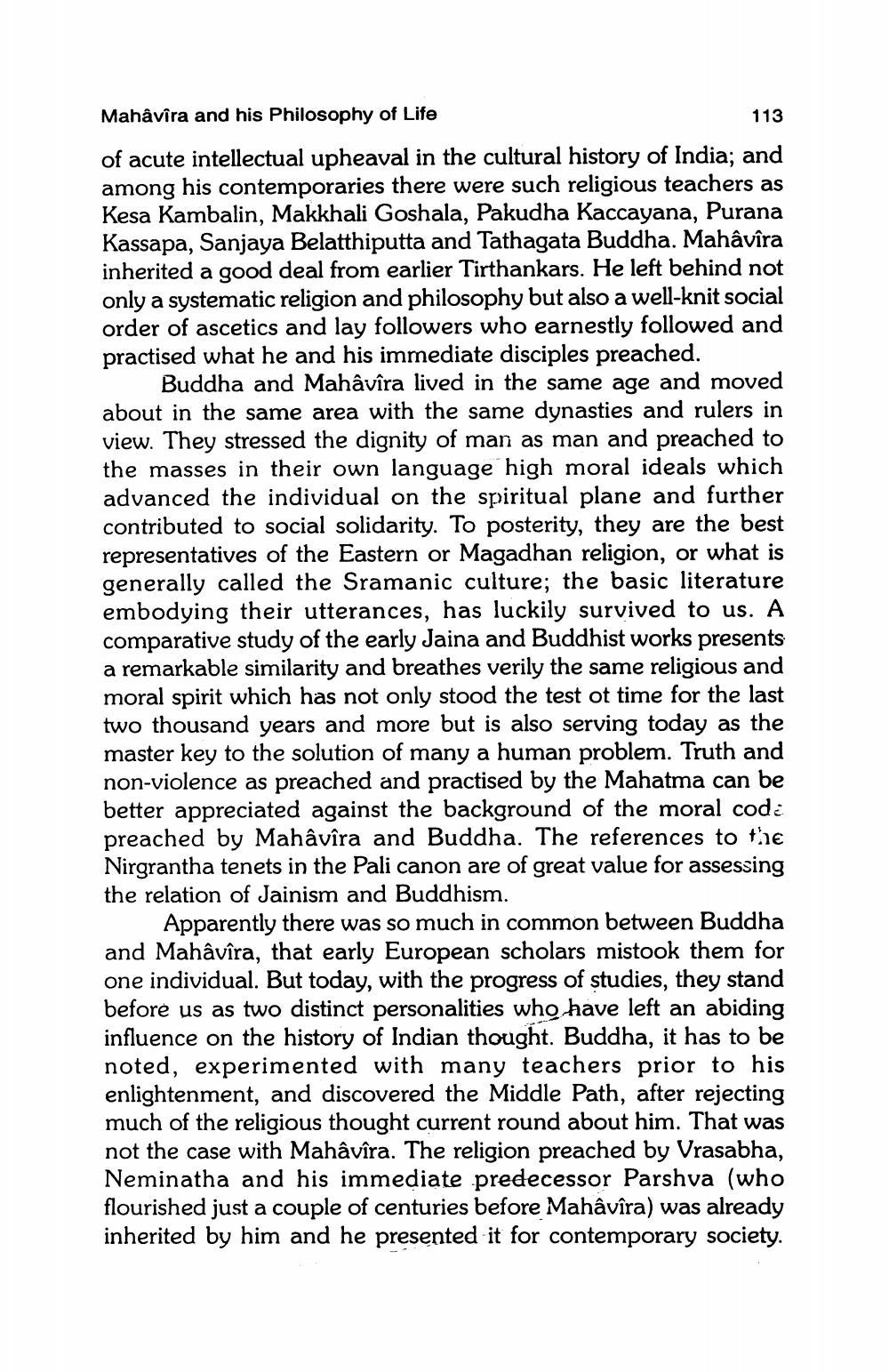________________
Mahâvîra and his Philosophy of Life
113 of acute intellectual upheaval in the cultural history of India; and among his contemporaries there were such religious teachers as Kesa Kambalin, Makkhali Goshala, Pakudha Kaccayana, Purana Kassapa, Sanjaya Belatthiputta and Tathagata Buddha. Mahâvîra inherited a good deal from earlier Tirthankars. He left behind not only a systematic religion and philosophy but also a well-knit social order of ascetics and lay followers who earnestly followed and practised what he and his immediate disciples preached.
Buddha and Mahâvîra lived in the same age and moved about in the same area with the same dynasties and rulers in view. They stressed the dignity of man as man and preached to the masses in their own language high moral ideals which advanced the individual on the spiritual plane and further contributed to social solidarity. To posterity, they are the best representatives of the Eastern or Magadhan religion, or what is generally called the Sramanic culture; the basic literature embodying their utterances, has luckily survived to us. A comparative study of the early Jaina and Buddhist works presents a remarkable similarity and breathes verily the same religious and moral spirit which has not only stood the test ot time for the last two thousand years and more but is also serving today as the master key to the solution of many a human problem. Truth and non-violence as preached and practised by the Mahatma can be better appreciated against the background of the moral code preached by Mahâvîra and Buddha. The references to the Nirgrantha tenets in the Pali canon are of great value for assessing the relation of Jainism and Buddhism.
Apparently there was so much in common between Buddha and Mahâvîra, that early European scholars mistook them for one individual. But today, with the progress of studies, they stand before us as two distinct personalities who have left an abiding influence on the history of Indian thought. Buddha, it has to be noted, experimented with many teachers prior to his enlightenment, and discovered the Middle Path, after rejecting much of the religious thought current round about him. That was not the case with Mahâvîra. The religion preached by Vrasabha, Neminatha and his immediate predecessor Parshva (who flourished just a couple of centuries before Mahâvîra) was already inherited by him and he presented it for contemporary society.




